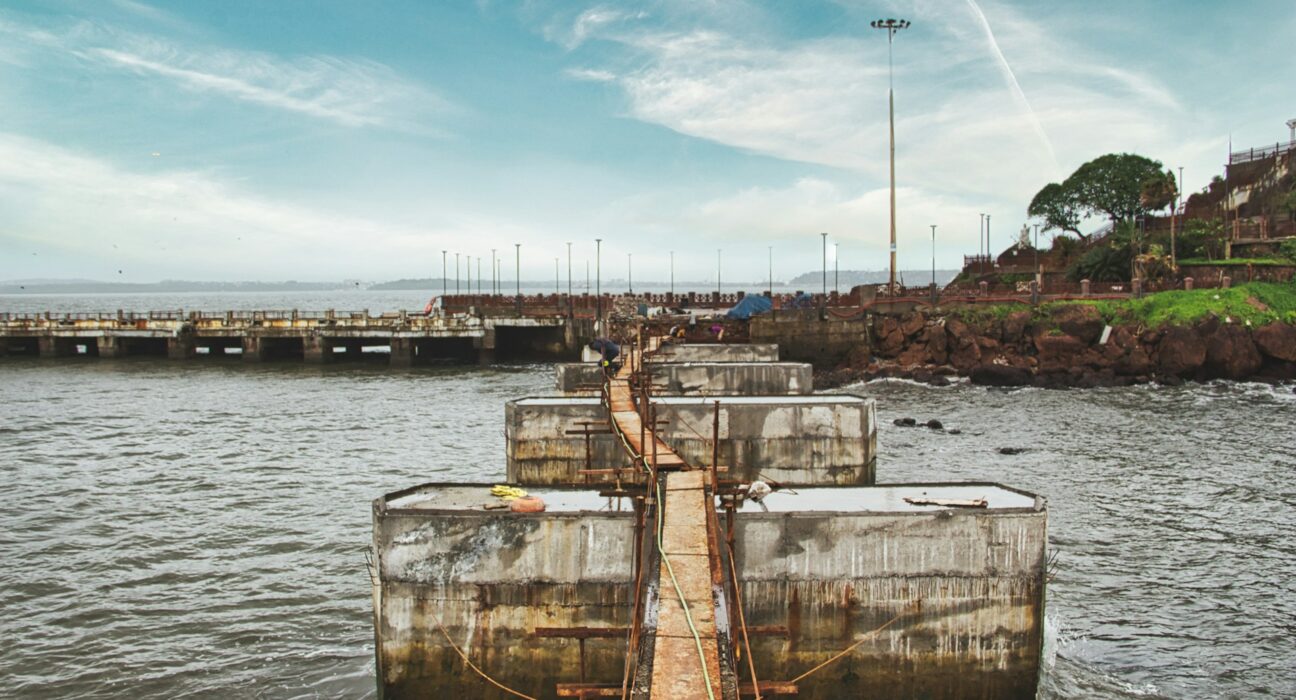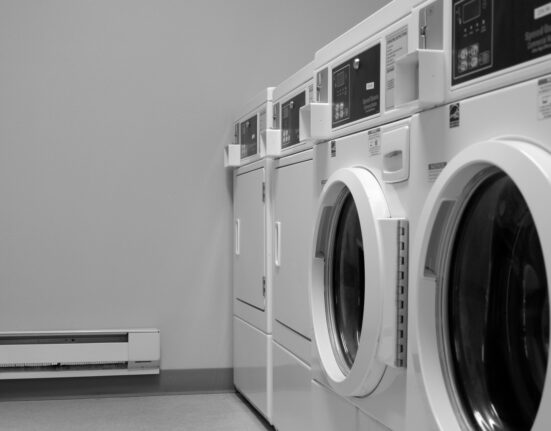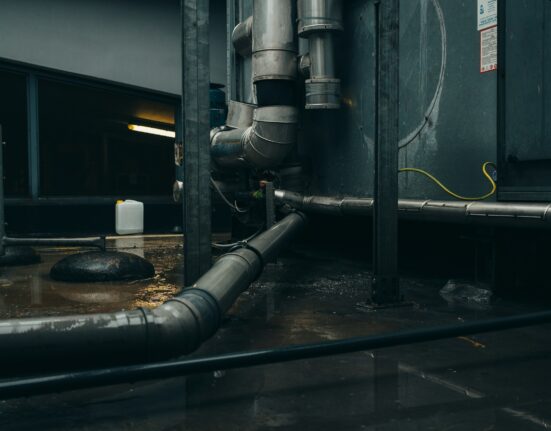Beneath the waves lies an intricate world of infrastructure that fuels industries, supports global economies, and sustains communities. Underwater construction plays a pivotal role in this hidden realm, enabling the development of essential maritime structures such as docks, bridges, and pipelines.
This article explores the fascinating domain of underwater construction, illuminating its impact on marine infrastructure. Discover how underwater construction techniques revolutionize our interaction with the seas, the challenges faced, and the innovations driving this field forward.
Whether you’re interested in structural engineering, marine biology, or global commerce, this insight into underwater construction offers valuable perspectives.
Understanding Underwater Construction in Marine Infrastructure
The Importance of Marine Infrastructure Development
Marine infrastructure is crucial for international trade, transportation, and energy production. Docks facilitate the loading and unloading of ships at international ports, bridges connect islands and overcome vast water expanses, and pipelines transport critical resources like oil and gas across sea beds.
These structures underpin global commerce, providing the backbone for international logistics and trade. Effective development and maintenance of marine infrastructure are essential for seamless maritime operations.
With increasing global dependence on marine resources, robust underwater construction methods ensure that these crucial elements remain functional and safe. Understanding the significance of underwater construction enhances appreciation for this complex field, highlighting its economic and social importance.
Key Players in Underwater Construction
The world of underwater construction features a range of professionals from diverse backgrounds. Marine engineers design and implement structural solutions, ensuring the integrity and functionality of underwater systems. They collaborate closely with marine biologists to minimize ecological impact, thus blending engineering with environmental stewardship.
Skilled divers and equipment operators execute the intricate and precise tasks required below the surface. Their expertise extends to tasks like pipeline removal, reinforcing the dynamic team effort propelling underwater construction.
Together, these professionals tackle challenges unique to underwater environments, blending technical skill, innovation, and environmental awareness to create sustainable marine infrastructure.
Techniques and Technologies in Underwater Construction
Pioneering Methods in Marine Engineering
Underwater construction deploys a range of methods tailored to unique aquatic conditions. One common technique is the use of caissons, large watertight structures that enable dry construction activities on the ocean floor. By creating controlled environments, caissons facilitate the building of docks, bridges, and platforms, ensuring safety and precision.
Another technique involves pilings, essential for docks and bridges. These long, solid posts are driven deep into the seabed, providing stability and support for above-water structures. Pilings must withstand significant environmental pressures and are typically constructed using sustainable materials to ensure longevity.
Cutting-edge Technologies Driving Innovation
Technological innovation propels underwater construction forward, redefining the boundaries of what is possible. Remotely operated vehicles (ROVs) are miniature submarines equipped with cameras and tools, enabling access to areas too dangerous or deep for human divers.
These devices are instrumental in the inspection, maintenance, and repair of underwater structures, enhancing precision and safety. Advancements in underwater welding techniques have also transformed construction capabilities.
New welding methods allow for longer, more secure seams in the harsh underwater environment. This breakthrough is critical for the integrity of pipelines and similar structures, contributing to safer and more durable marine infrastructure.
Challenges in Underwater Construction Projects
Environmental and Structural Complexities
Underwater construction projects face numerous environmental challenges. Currents, water pressure, and visibility can complicate building efforts and impact structural integrity. Ensuring stability in variable sea conditions often requires adaptive and innovative construction strategies tailored to specific sites.
Subsurface conditions, such as varying sediment layers or marine life habitats, further increase project complexity. To ensure minimal disturbance to marine ecosystems whilst maintaining project feasibility, detailed surveys and careful planning are vital. Balancing ecological, structural, and economic considerations requires strategic design and expert execution.
Navigating Regulatory and Logistical Hurdles
Compliance with rigorous environmental and safety regulations is a critical aspect of underwater construction. Projects must adhere to international maritime laws, maintaining standards of operation to protect both workers and ecosystems. Navigating these regulations demands comprehensive planning and constant vigilance.
Logistics present another layer of challenge, involving coordination between various teams, precise scheduling, and resource management. Accessibility issues, weather conditions, and equipment maintenance all impact project timelines and efficiency. Effective project management is key in overcoming these obstacles, ensuring smooth progress and within-budget completion.
Applications of Underwater Construction Techniques
Building Platforms and Pipelines
Underwater construction techniques are vital in establishing offshore platforms and pipelines. These structures are critical for energy production and transportation. Special techniques like horizontal drilling and pipe-laying ships are employed to lay pipes efficiently, traversing vast oceanic distances without disturbing marine habitats.
The meticulous process of pipeline installation involves laying, trenching, and burying the pipes to prevent degradation or damage. Ensuring structural stability and protection of pipelines is essential, demanding precision and adherence to meticulous planning and safety standards.
Maintenance and Reconstruction
Beyond initial construction, maintenance, and reconstruction are crucial for the longevity of marine infrastructure. Regular inspections identify potential issues before they become significant problems. Proactive maintenance efforts, such as repairing corrosion or strengthening foundations, protect the functionality and safety of installed structures.
Innovative reconstruction techniques revitalize aging infrastructure, combating wear from saltwater exposure and contaminants. This rejuvenation extends the lifespan of structures like docks and bridges, ensuring continued service. Strategic planning and application preserve underwater infrastructure, safeguarding investments and operational continuity.
Exploring Future Trends in Undersea Development
Green Technologies and Sustainable Initiatives
Sustainability is increasingly central to underwater construction, reflected in the emergence of green technologies. Eco-friendly materials and designs that minimize ecological impact are gaining traction, promoting aquatic ecosystem preservation. Floating platforms and renewable energy sources, like tidal and wave energy, support sustainable infrastructure endeavors.
Research and innovation are focused on reducing carbon footprints and integrating natural ecosystem services into project designs. By prioritizing sustainability, the future of underwater construction aligns with global resource conservation efforts, fostering greener and more resilient maritime advancement.
The Role of AI and Robotics
The integration of artificial intelligence (AI) and robotics is reshaping underwater construction. AI-driven solutions streamline project management, predictive maintenance, and resource allocation, optimizing efficiency and accuracy. Machine learning models analyze vast datasets, providing insights for decision-making and risk assessment.
Robotic advancements like autonomous underwater vehicles (AUVs) enhance exploration, inspection, and repair capabilities. These robots can operate independently or alongside ROVs, traversing challenging terrains and addressing complex tasks.
Collaboration between human expertise and robotic precision drives innovation, expanding the possibilities for future marine infrastructure development.
Conclusion
Underwater construction is a dynamic realm that ensures the reach and resilience of marine infrastructure. Through a blend of engineering excellence, innovative technologies, and environmental stewardship, this field supports crucial structures like docks, bridges, and pipelines.
With its critical contributions to global connectivity, energy, and commerce, underwater construction remains indispensable. The challenges faced, from environmental complexities to regulatory frameworks, are met with expertise, insight, and adaptability. Future trends spotlight sustainable practices and technological integration, highlighting the potential for continuous advancements.
By understanding the role of underwater construction in marine infrastructure, businesses, engineers, and enthusiasts can appreciate its significance and explore opportunities for engagement. Whether you’re building new platforms or managing existing assets, this sector offers compelling prospects for blue growth and sustainable processing.
Encouraging exploration and investment in innovative solutions adds substantial value to global economies, ensuring vibrant connections across our aquatic planet.








Leave feedback about this